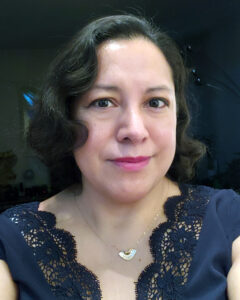*
For me, wearing shoes symbolizes the possibility of walking and beginning new adventures. Of course, we do not need to walk to do great things. Frida Kahlo, the famous Mexican painter, who could not walk for some time, wrote, “Pies, para que los quiero si tengo alas para volar?” (Feet, what do I need them for if I have wings to fly?) Indeed, we do not need feet to do great things.
But back to shoes. Recently I moved, and my friends noticed I have many pairs of shoes. I have some for special occasions and some only for comfort, like the Vans. I am not a fashionista, but I like to wear different shoes matched to my clothes and to where I go. However, recently I have been running late all the time and have been wearing more or less the same comfortable shoes. For a few months, with the pandemic, I spent most of my time inside without shoes. Yet, my shoes symbolize possibilities. Like my hiking shoes, which allowed me a beautiful walk in Yosemite National Park a few weeks ago. They represented my feet’s capacity to go beyond pain and difficulties, to connect with nature. Or my wedding shoes, a symbol of a beautiful past.
It is true, shoes tell us stories. They allow us to imagine an improbable way or boring routines. I use my imagination to try to figure out the story of sneakers hanging on the power lines or on the trees in low-income neighborhoods worldwide. This kind of urban decoration is not exclusive to New York. I saw pairs in Mexico, France, and all over the world on my trips. Since my childhood, I have tried to imagine what that means. Is it maybe a way to fix territorial boundaries, or to have fun? Someone said people put them there before leaving to live in better places, and someone else said they are related to stories of gangs. Also, I remember growing up seeing baby shoes on the buses. In Mexico, many drivers hang the booties of their babies on the windshield as a lucky charm. I considered it very cheesy, but I know it meant something to them. The babies grew up, I left the city, and many of those baby shoes are still running. We also say “encontrar la horma a su zapato” (in English, we would say, “to meet one’s match”), meaning to find the right person for our lives. This is not easy, and we need to cross many kilometers before we find this, so this is a reason to wear good shoes.
However, my most impressive moments concerning shoes have links with sad stories. One of them is the “pyramid of shoes.” Humanity and Inclusion, a French nonprofit, collects shoes and has created shoe pyramids since 1995 to remember the anti-personnel mines’ victims. In 1997, the Ottawa Treaty Against Anti-Personnel Mines was ratified, followed in 2008 by the Oslo Convention on Cluster Munitions. However, several people worldwide continued to lose their feet in countries touched by past or present wars. I saw the pyramid of shoes in Paris in different years, and I too put some shoes on it.
The second one is an artistic project, “Huellas de la Memoria” (Footprints of Memory). I had in my hands the shoes of several people who are looking for missing children or parents. This project honors the way of families who walk for years, looking for their missing dears. Each outsole has a carved message, and the names of the missing person and the person looking for her. They paint it green and print it. Most of the statements contain words of hope. For example: “My name is Maria. My dear son, I continue looking for you my whole life.” Alfredo López Casanova, the artist, realized this project after watching mothers protest in the center of Mexico City. He observed their tired feet; the idea was born. The shoes traveled to some countries. I participated in organizing the exhibition in Paris. It was so powerful to touch all these shoes and read their stories. These shoes are still in movement, even though nobody wears them.
I agree with the idea that our feet leave traces. Sometimes they disappear very fast, like footprints on the beach. But this is part of the way of our lives. Every walk means a decision, and by this, the possibility to receive and leave different footprints, some of them more than the marks of our pair of shoes.
*
*
 Jackie Leduc published essays in LR18 and LR19, about her memories of Paris, Africa, and New York. Born in Mexico, she lived in Paris for 14 years, as an urban planner in housing and community development. In New York since 2017, she volunteers and studies. Her University Settlement classes have helped her to achieve her goals. She recently earned a master’s degree in urban policy and leadership from Hunter College.
Jackie Leduc published essays in LR18 and LR19, about her memories of Paris, Africa, and New York. Born in Mexico, she lived in Paris for 14 years, as an urban planner in housing and community development. In New York since 2017, she volunteers and studies. Her University Settlement classes have helped her to achieve her goals. She recently earned a master’s degree in urban policy and leadership from Hunter College.